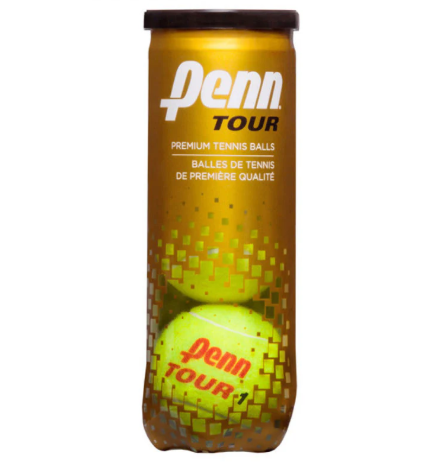When it comes to playing tennis, the right equipment can make all the difference. While most players focus on their racquets and shoes, many overlook one crucial element: the tennis ball. The choice of tennis ball isn’t just a matter of preference; it can impact your game in ways you might not even realize. Whether you’re a seasoned player or just starting out, understanding how to select the perfect ball for your style and environment is essential.
With so many options available today—from pressureless balls for practice sessions to high-performance balls designed for competitive play—navigating this decision can feel overwhelming. But fear not! This guide will break down everything you need to know about choosing right tennis balls. Let’s dive into what makes each type unique and how you can pick one that suits your game perfectly.
The Importance of Choosing the Right Tennis Ball
Selecting the right tennis ball is crucial for enhancing your performance on the court. The ball you choose can significantly impact your playing style, serve speed, and overall enjoyment of the game.
Different types of balls are designed for various surfaces and levels of play. A high-quality ball provides better bounce, spin, and durability. This not only helps maintain consistency during matches but also allows players to hone their skills effectively.
Moreover, using the appropriate tennis ball can reduce injury risks. For instance, softer balls are ideal for beginners or those who prefer a gentler touch while practicing strokes.
Choosing wisely ensures that every match feels engaging and competitive. It’s about finding that perfect blend of comfort and challenge to elevate your game to new heights.
The Different Types of Tennis Balls
Tennis balls come in various types, each designed for specific conditions and playing styles.
Standard tennis balls are the most common choice for recreational players. They’re made with a felt covering that provides durability and good bounce.
For competitive play, you’ll find tournament-grade balls. These are rigorously tested for performance and consistency, making them ideal for serious matches.
Then there are pressureless tennis balls. Unlike standard ones filled with air, these maintain their bounce over time but may feel different during play.
If you’re playing on a softer surface like clay, opt for extra-duty tennis balls. Their thicker felt holds up better against wear from abrasive courts.
There’s foam or beginner’s tennis balls aimed at young players or those new to the game. They have reduced speed and bounce to help develop skills without overwhelming newcomers.
Factors to Consider When Choosing a Tennis Ball
When selecting the right tennis ball, several factors come into play.
A. Playing Surface
The type of playing surface can significantly impact your choice of tennis ball. Different courts, whether clay, grass, or hard surfaces, react uniquely to the balls used.
On a clay court, for example, players often prefer softer balls that provide better control. They allow for longer rallies and more strategic shots. The slower speed of these balls complements the sliding movement on this surface.
Conversely, hard courts call for a more durable option. These surfaces wear down tennis balls quickly. A firmer ball will hold up against the abrasive nature while providing a consistent bounce.
Grass courts introduce yet another dynamic. Balls tend to skid off this surface due to its low bounce potential. Players might opt for slightly heavier options that maintain their pace without sacrificing playability.
Understanding your specific court type is essential when selecting the right tennis ball. It ensures you are well-equipped to enhance your game experience effectively.
B. Altitude and Climate
Altitude plays a crucial role in how tennis balls perform during matches. At higher elevations, the air is thinner. This can lead to faster ball speeds and less drag. Players often find that they need to adjust their playing style accordingly.
Climate also impacts the behavior of tennis balls. Humidity levels affect pressure retention over time. In humid conditions, balls may feel heavier and lose their bounce more quickly compared to dry environments.
It’s essential for players to consider these factors when selecting equipment. An ideal choice at sea level might not work as well on a mountain court or in a humid region. Tailoring your ball selection based on altitude and climate can enhance performance and enjoyment on the court.
Choosing wisely ensures you maintain consistent play throughout various conditions while preventing frustration from unexpected bounces or sluggishness during games.
C. Personal Preference and Skill Level
When it comes to tennis balls, personal preference plays a significant role. Every player has their unique style and feel they look for in a game. Some prefer firmer balls that offer more control, while others might lean towards softer options for better comfort during play.
Skill level is another crucial aspect to consider. Beginners often benefit from balls designed for slower play, which can help them develop proper techniques without feeling overwhelmed. Advanced players may opt for premium balls that provide enhanced spin and speed.
It’s also essential to keep in mind how frequently you play. Casual players might prioritize durability over performance, while competitive athletes will seek the latest technology in ball design. Your choice of tennis ball should resonate with your playing style and needs on the court.
How to Choose the Right Tennis Ball for You
Choosing the right tennis ball can significantly enhance your game. Start by considering your skill level. Beginners may prefer softer balls that provide better control, while advanced players often seek those with more speed and spin.
Next, think about the surface you’ll be playing on. Clay courts benefit from durable balls designed to withstand abrasion, whereas hard courts require a balance between bounce and longevity.
Don’t overlook altitude either. If you live in high-altitude areas, opt for pressureless balls that maintain consistency despite thinner air.
Personal preference plays a crucial role. Test several brands to find the one that feels right in your hand and complements your style of play. Everyone’s journey is different; trust yours as you explore various options available on the market today.
Maintenance and Storage Tips for Tennis Balls
Proper maintenance can extend the life of your tennis balls. Always keep them in a cool, dry place. Avoid exposing them to extreme heat or humidity, as these conditions can degrade their performance.
When not in use, store tennis balls in a pressurized container if possible. This helps retain the internal pressure and bounce quality over time. Try to avoid leaving your tennis balls on hard surfaces for long periods; this can cause unnecessary wear and tear.
Instead, keep them inside your bag until you’re ready to hit the court. If you notice dirt or grime on the surface, simply wipe them down with a damp cloth before playing. Clean balls perform better and provide improved grip during matches.
Rotate between multiple sets of tennis balls during practice sessions. This helps ensure consistent play while allowing each ball some downtime for recovery.
The Science Behind Bouncing and Pressure in Tennis Balls
Tennis balls are fascinating little spheres of engineering. Their ability to bounce is largely due to the pressure maintained inside them. This internal pressure pushes against the rubber walls, creating a force that propels the ball off the ground when struck.
The core of a tennis ball typically contains gas or air under high pressure. When you strike the ball, this pressurized core compresses and then expands rapidly, which results in that satisfying bounce we all love.
It’s interesting to note how different surfaces affect bouncing behavior. Grass offers less bounce compared to hard courts, while clay can slow down your game significantly.
Temperature also plays a role; warmer conditions increase internal pressure, enhancing responsiveness during play. Understanding these nuances allows players to select their equipment more effectively and improve their overall performance on court.
Conclusion
Choosing the right tennis ball is crucial for enhancing your game and ensuring an enjoyable experience on the court. With various types available, understanding their differences can make all the difference in how you play.
Considering factors like playing surface, altitude, climate, personal preferences, and skill level will guide you to a suitable choice. The right ball complements your style and helps elevate your performance.
Proper maintenance and storage of tennis balls also prolongs their life span and keeps them in optimal condition for longer use. Understanding the science behind bouncing and pressure adds another layer to your knowledge as a player.
Investing time into selecting the perfect tennis ball not only improves gameplay but also enriches every match played. Whether you’re just starting or are a seasoned pro, making informed choices leads to better results on the court. Embrace this pivotal aspect of tennis – it’s bound to enhance both your skills and enjoyment of this incredible sport.

